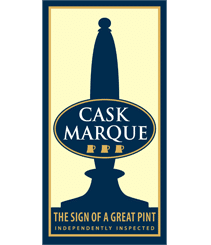The Cask Marque Guide To Beer Styles:
I bet you all have a friend or a colleague who tells you they don’t like beer? I know. It’s unfathomable to you and I. But these mad, sad fools need our guidance because their experience or perception of beer has probably been a poor one. We know that not all beer is the same, we know that saying you don’t like beer is akin to saying you don’t like food.
So, in this new series from Annabel Smith, in-house Beer Sommelier at Cask Marque, we’re going to take a light hearted look at a range of beer styles, and help you persuade the uninitiated masses to try a tipple.
*Spoiler alert: some of these beer styles are NOT cask. Gulp!
Lager
Before you all spit out your beer in disgust and wonder what the hell Cask Marque are doing writing about lager, indulge us for a few minutes of your time. One of the most commonly uttered phrases we hear from drinkers is:
“I don’t like beer. But I like lager”
But lager is a beer, whether you like it or not. And for many drinkers, lager will be the first beer style they try, and for brewers, making a good lager requires technical brilliance.
So before you dismiss all lagers as yellow, cold and fizzy, read on…
What’s The Difference Between Lager And Ale?
There is one main difference – it’s in the type of yeast used to ferment the wort (the liquid produced when grain is steeped in hot water) into beer. Lager yeasts ferment at relatively cold temperatures, they ferment much more slowly than ale yeast, and the yeast lies at the bottom of the fermenting vessels.
Coming from the German verb lagern, (‘to store’), lagers are usually matured after fermentation, on the yeast, for between several weeks and several months, often near or below the freezing point (known as lagering). During this process unwanted flavour and aroma compounds are reabsorbed and transformed by the yeast which settles to the bottom of the beer, leaving it clear.
Where Did Lagers Come From?
All lagers have their roots in Bavaria. During the 16th century it was decreed that no beer could be produced in the region between April and September, because it would spoil during the summer months. So ale was made during the winter months, packed into cold, icy, underground caves. The result? The ale yeast became dormant resulting in only lager yeast surviving, and in 1883, this lager yeast was isolated and cultured by the Carlsberg brewery. Called Sachromyces Carlsbergensis, they shared it with brewers around the world, meaning all lagers actually originate from this strain of Carlsberg yeast.
Did you know that …… 9 out of 10 beers consumed around the globe are lagers?
As well as mainstream brand lagers such as Budweiser, Carlsberg and Stella Artois, there are also:
- Pilsners – made using soft water, European hops (usually Saaz), Czech grown malted barley
- Dark Lagers – There is a common perception that all lagers are golden, light and low in alcohol. However, there are dark and strong lagers, smoked lagers, sweet malty lagers, and blond spritzy lagers.
Additionally, world lagers such as Cobra, Asahi and Peroni have been created to match the cuisine of the country where they were developed (Asahi and sushi, or Cobra and curry, for instance.)
Characteristics:

To Serve:
Lagers match a range of foods. The light citrus notes in mainstream lagers CUT through oily fish and pizzas. The bready notes in Pilsners COMPLEMENTS cheese and charcuterie, and the toffee notes in darker lagers COMPLEMENT ribs, burgers and roast meats and even suit chocolate puddings.
Just avoid very hot and fiery foods (like vindaloos). Mainstream lagers do not always complement these – instead creating an unpleasant bitterness in the beer.
Still think they’re yellow, cold and fizzy? Maybe it’s time to try a lager again?
Like our beer styles blog? Read the previous ones on Stouts & Porters, Wheat Beer, Trappist & Abbey Ales and Pale Ales.


